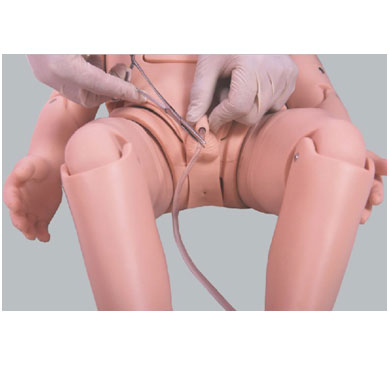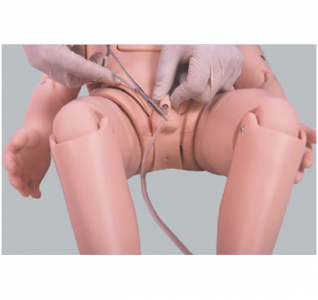In the field of pediatric care, urinary catheterization is a vital diagnostic and therapeutic technology. The pediatric catheterization model, as a professional teaching aid, leads a new trend in pediatric nursing with its precise simulation characteristics.

The design of the pediatric catheterization model takes full consideration of the physiological characteristics of pediatric patients, and accurately simulates everything from the shape and size of the urethral opening to the capacity and position of the bladder. This makes the model look and feel very similar to real pediatric patients, providing a highly realistic training environment for medical staff.
In actual operations, medical staff can use the model to practice simulated catheterization operations. The model can simulate real conditions such as stricture and curvature of the urethra, allowing medical staff to experience real challenges during operations. Through continuous practice, medical staff can gradually master the skills and precautions of urinary catheterization and improve their operational level.
In addition to basic operational exercises, the pediatric catheterization model can also simulate various abnormal conditions and complications. Medical staff can respond to various emergencies in simulations and practice their ability to adapt and deal with complex situations. This kind of simulation training not only improves the skill level of medical staff, but also makes them more familiar with and masters the procedures and specifications of urinary catheterization operations.
It is worth mentioning that the pediatric catheterization model also has intelligent features. The model can record the operation process of medical staff and provide feedback and suggestions through data analysis. This intelligent assessment method allows medical staff to understand their own shortcomings in a timely manner and make targeted improvements in subsequent training.
In addition, the pediatric catheterization model also has good portability and durability. The model is made of lightweight materials, easy to carry and store, and is suitable for training needs in various situations. At the same time, the model has undergone strict quality inspection to ensure stable performance and long service life during use.
To sum up, the pediatric catheterization model brings a new experience to the teaching and training of pediatric nursing with its precise simulation and high simulation characteristics. It can not only improve medical staff's operational skills and ability to handle complex situations, but also help them continue to improve through intelligent assessment methods. It is believed that in future pediatric care, pediatric catheterization models will continue to play an important role and lead the new trend in pediatric care.

